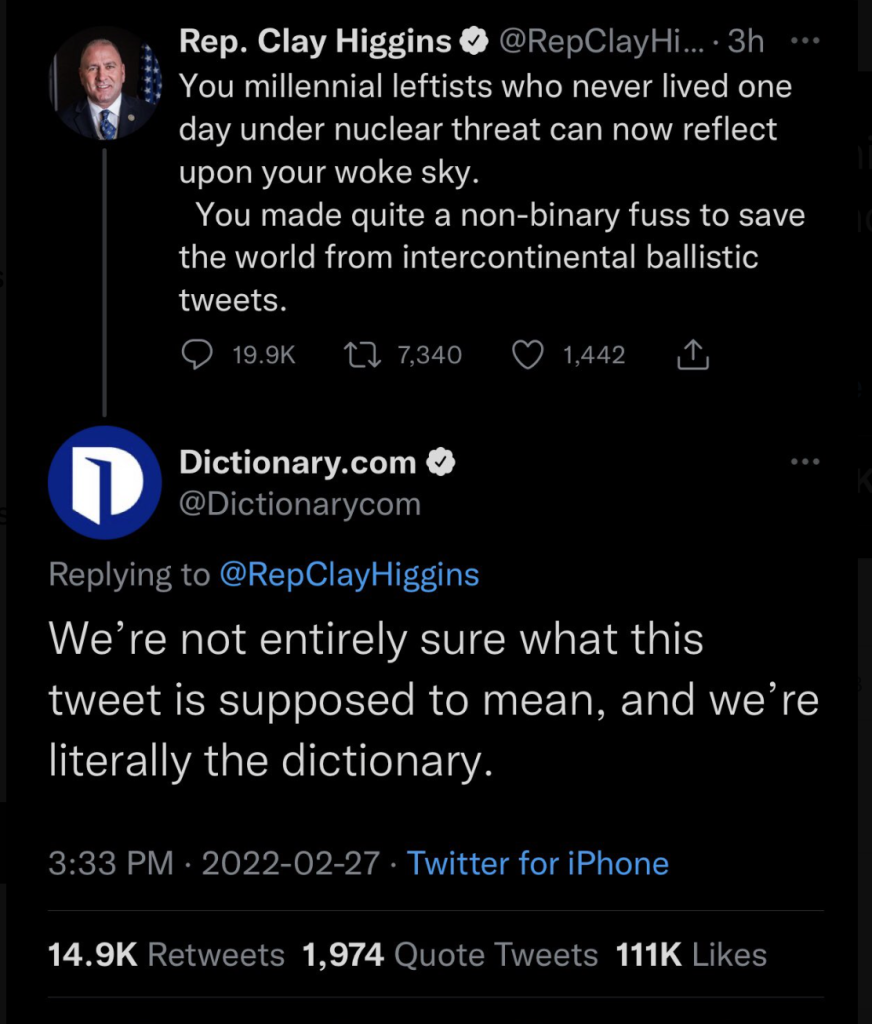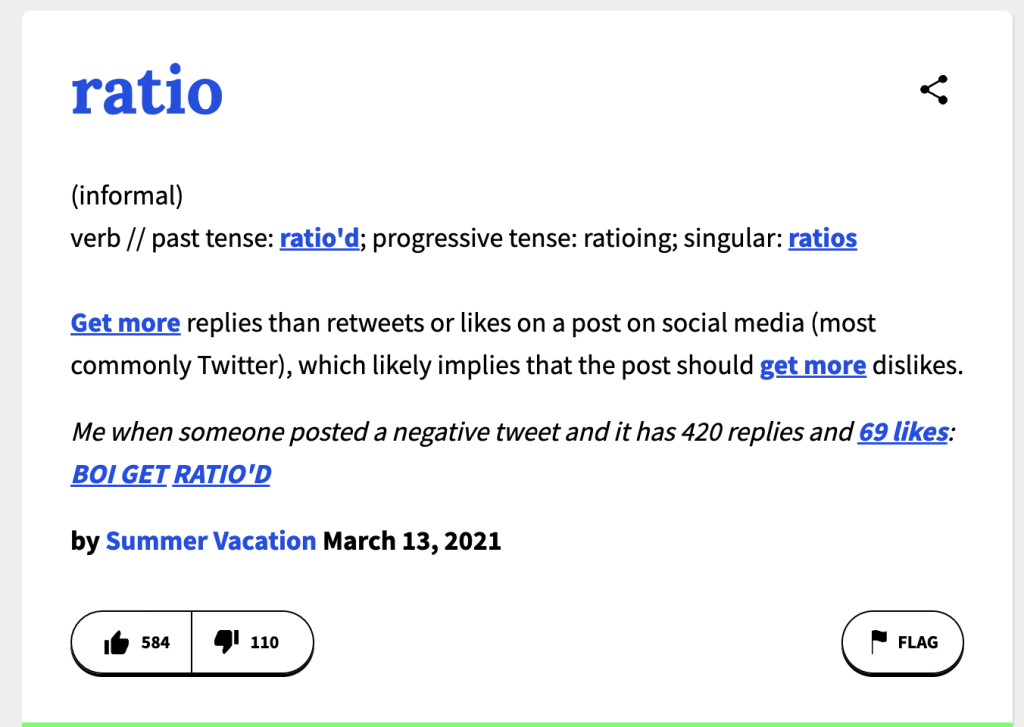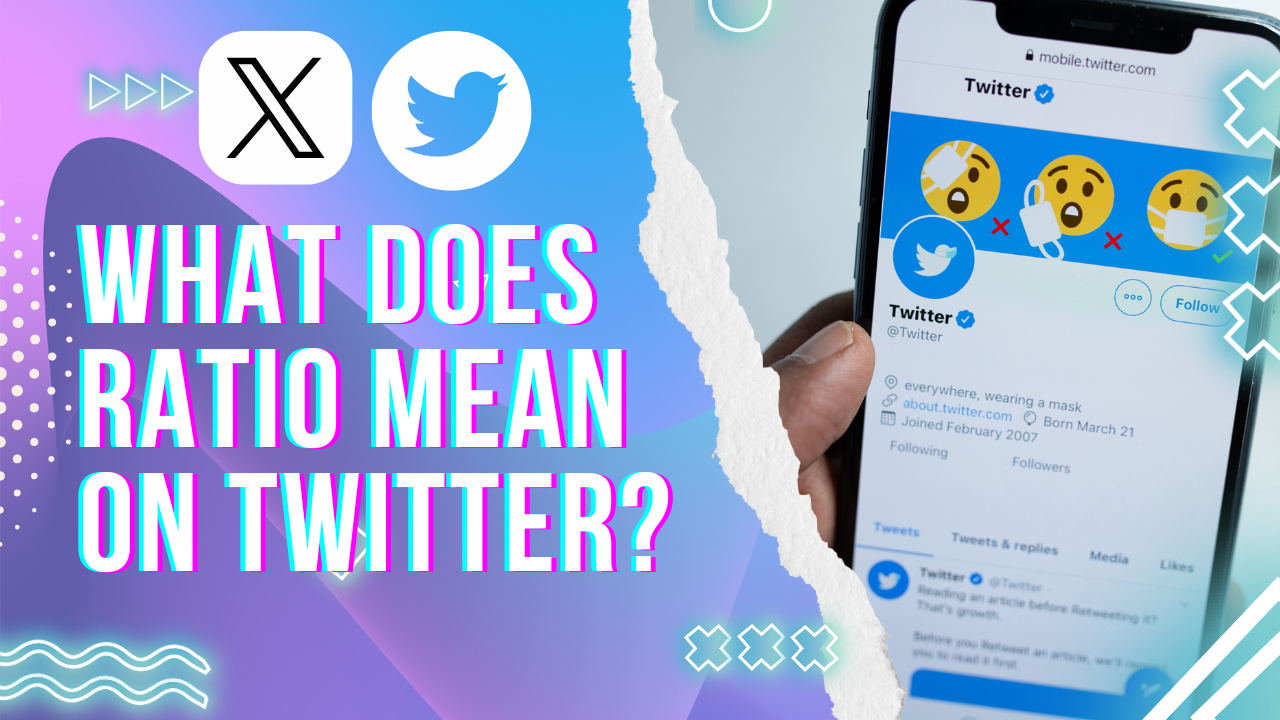In the world of Twitter, the word “ratio” gets thrown around a lot, especially among creators, influencers, and brands.
But what does it actually mean? And why should creators and businesses who use social media for monetization care?
Whether you’re running a personal brand, managing a company account, or just trying to grow your following, understanding how people react to your X content is key.
One of the most telling ways to measure that reaction on Twitter is through something called the “ratio.”
The Twitter ratio isn’t an official metric you’ll find in analytics tools, but it’s a powerful signal from the community.
In this article, we’ll break down what does ratio mean on Twitter, why it matters, how to calculate it, and how to improve it so your content stays engaging and on-point.
What does Ratio Mean on Twitter?
The term “ratio” on X refers to the relationship between the number of replies a tweet gets compared to the number of likes or retweets.
When a tweet gets significantly more comments than likes or retweets, it’s often a sign that the tweet is unpopular or controversial.
It’s a digital signal that the X community isn’t on board with what was said, and that there are divisive opinions to say the least.
For example, imagine a brand tweets something like, “Pineapple absolutely belongs on pizza. Case closed.” If the tweet gets 200 replies but only 20 likes and 10 retweets, that’s a classic case of being ratioed. More comments.
Most people are replying (probably to argue) rather than showing support through likes or shares.
In short, a tweet that’s being ratioed is getting more talk-back than love.
It’s a mistake to ignore a ratioed posts because it will not help you get more Twitter followers.
Trolls, Stans, Publicity, and Ratioed Tweets
Ratioed posts aren’t always a straightforward sign that you were wrong or offensive. Social Media can be a messy place, and a lot of different forces influence who replies and why.
Trolls, users who enjoy stirring controversy, often target tweets to provoke others. Stans, who are overly passionate fans of a person or group, can also swarm a tweet just to defend their favorite celebrity or creator on the internet.
Take, for instance, a small business that tweets a tongue-in-cheek joke about a pop star.
Even if it’s lighthearted, if that pop star has tons of fans, you might suddenly find your tweet flooded with angry replies. That’s a stan-triggered ratio. Fans are very protective of their celebrity
Then there’s the publicity factor. Sometimes posts get ratioed because they become viral tweets for the wrong reasons.
A tone-deaf marketing campaign or misinformed comments on a page can snowball quickly with users.
One example is when a major food chain once tweeted a message meant to empower women but did so in a way that came off as sexist. The backlash was immediate, comments skyrocketed, and likes stayed low.
That was a textbook ratio, but it also led to widespread attention, news coverage, and a chance to explain their message.
So while getting ratioed usually suggests a tweet didn’t land well, it can also open the door for broader conversations and even brand awareness.
What Does it Mean to be “Ratioed” on Twitter?
To be “ratioed” means your tweet has received a flood of comments and only a trickle of likes and retweets. It could also mean that a comment got more likes than the original post.
It suggests the community either disagrees, is confused, or wants to call out what you said. Think of it as Twitter’s version of a public disagreement. There also may be negative replies and more comments than likes.

Let’s say a creator posts a hot take like, “You’re not a real entrepreneur unless you wake up at 4 AM.” This might trigger people in the comments section who believe in work-life balance or follow different productivity routines.
If that particular post gets 300 comments debating the point, but only 50 likes and 20 retweets, it’s been ratioed. This is the same meaning on other social media apps.
For businesses and creators, ratio Tweets are something to watch for because it’s not just noise: it’s a signal.
It means your audience is engaging, but maybe not in a large scale way. It could be a learning moment, a branding opportunity, or a situation that needs careful handling to avoid reputational damage.
What does ratio mean in Urban Dictionary?

Urban Dictionary offers a more humorous, slang-based take on the idea. It defines “ratio” as what happens when your tweet is so bad, people can’t help but reply, and not in a good way. Here’s one of the definitions:
“A ratio is when your tweet is so bad, people feel the need to reply instead of like.”
This definition gets to the heart of how social media users see the ratio. It’s less about formal metrics and more about community judgment.
In some cases, people will comment “ratio” directly on a tweet to try to start a viral chain where their reply gets more likes than the original tweet.
This happens a lot on TikTok, Facebook, and Instagram too. People literally comment “ratio” to challenge the popularity of a post in the comments.
So while it started on Twitter, the idea of the ratio has evolved into a broader internet trend. It’s part performance, part protest, and part popularity contest.
FAQs about Twitter Ratio
Here we will discuss some of the most common questions about the word ratio on X. The answers can apply to other popular content sharing platforms as well.
What is the meaning of the term “ratio” on Twitter?
A “ratio” happens when there are significantly more replies than likes or retweets.
It often means that the tweet is receiving negative feedback, disagreement, or criticism. It’s not a technical term from Twitter itself, but it’s widely understood in internet culture.
Why is the ratio important on Twitter?
The ratio is important because it helps you understand how your content is being received. While likes and retweets show support, a flood of comments can indicate trouble in the comments section.
If you see that your tweet is getting ratioed, it might be time to reassess the message, clarify your point, or join the conversation to describe and offer more context.
Be mindful when posting about controversial topics to other users. They will be more likely to leave negative replies, leading to a high ratio.
How can you calculate the ratio of a tweet on Twitter?
Calculating the ratio is pretty simple. Just compare the number of replies to the number of likes or retweets.
If the replies are much higher, the tweet has likely been ratioed. For example, if a tweet has 150 replies, but only 30 likes and 10 retweets, that’s a clear sign.
While there isn’t a hard rule, most users recognize a tweet as ratioed when the replies are the dominant form of engagement.
It’s not even about a specific number: more replies over everything = high ratio.
What are some strategies for improving your Twitter ratio?
Understand your audience
Improving your Twitter ratio starts with understanding your audience.
The more you know about what your followers care about, the easier it is to create content that resonates.
If you’re a fitness brand and your followers value motivation and honesty, posting extreme views or unrelatable routines might backfire.
Instead, stick with content that speaks to their goals and lifestyle.
Use the appropriate tone and timing
Tone and timing also matter a lot in your response. Even a well-meaning tweet can fall flat if it’s posted at the wrong time or comes off as too harsh or arrogant.
Before tweeting, read it out loud or get a second opinion, especially if it touches on sensitive issues.
For example, during major news events, brands that tweet as if nothing is happening often get ratioed for seeming out of touch. Timing your content appropriately can make a big difference in how it lands in other cases too.
United CEO was notably under fire with a huge ratio issue in 2017 when the airline had some big issues. Suffice to say that with 41k comments and significantly less engagements, customers were outraged at United. Very important to make the right statement.
Giving a response to your comments can also help improve your ratio. If you post something that sparks a controversial opinion, be part of the conversation.
Not many people use direct messages, but it is another way to respond to especially escalated comments on the app.
Answer questions, thank people for their feedback, and explain. This turns a potentially negative situation into a positive dialogue. It also shows that your brand or profile is active and willing to listen.
Choose humor
Also, humor is a powerful tool, but it can backfire if used carelessly; some tweets try to be edgy or sarcastic and end up as an insult.
When using humor, test it on a few team members or friends before going live. Brands like Wendy’s are famous for their sassy status, but they balance it with timing and a deep understanding of their audience.
Analyze metrics
Finally, use Twitter analytics to guide your content. Track which tweets perform well in terms of likes and retweets versus replies.
If a certain type of content consistently keeps your ratio healthy, double down on that for future posts.
Is the ratio the only metric to consider on Twitter?
No, the ratio is just one signal of audience sentiment. Twitter offers a variety of official metrics that can give you a fuller picture.
Impressions tell you how many people saw your tweet. Engagements show the total number of actions taken (likes, clicks, replies, retweets). Engagement rate helps you understand the effectiveness of your tweets relative to their reach. And follower growth tells you whether your content is helping expand your audience.
Conclusion
So, what is the word “ratio” on social media? It’s a way users judge how well (or how badly) a tweet is received according to public opinion. Often, controversial posts have a high ratio.
A high reply count and low likes or retweets signal that your message might be missing the mark. While being ratioed isn’t always the end of the world, it’s something creators and brands should pay attention to.
On traditional social media apps, how people respond matters just as much as what you post.
Use the ratio as a quick feedback tool. Learn from it. And if you ever do get ratioed, don’t panic. Take it as a chance to listen, learn, and grow your online voice.
The more intentional you are with your tweets, the better your chances of building a strong and supportive audience: one that’s more likely to like and retweet than to reply with criticism.


